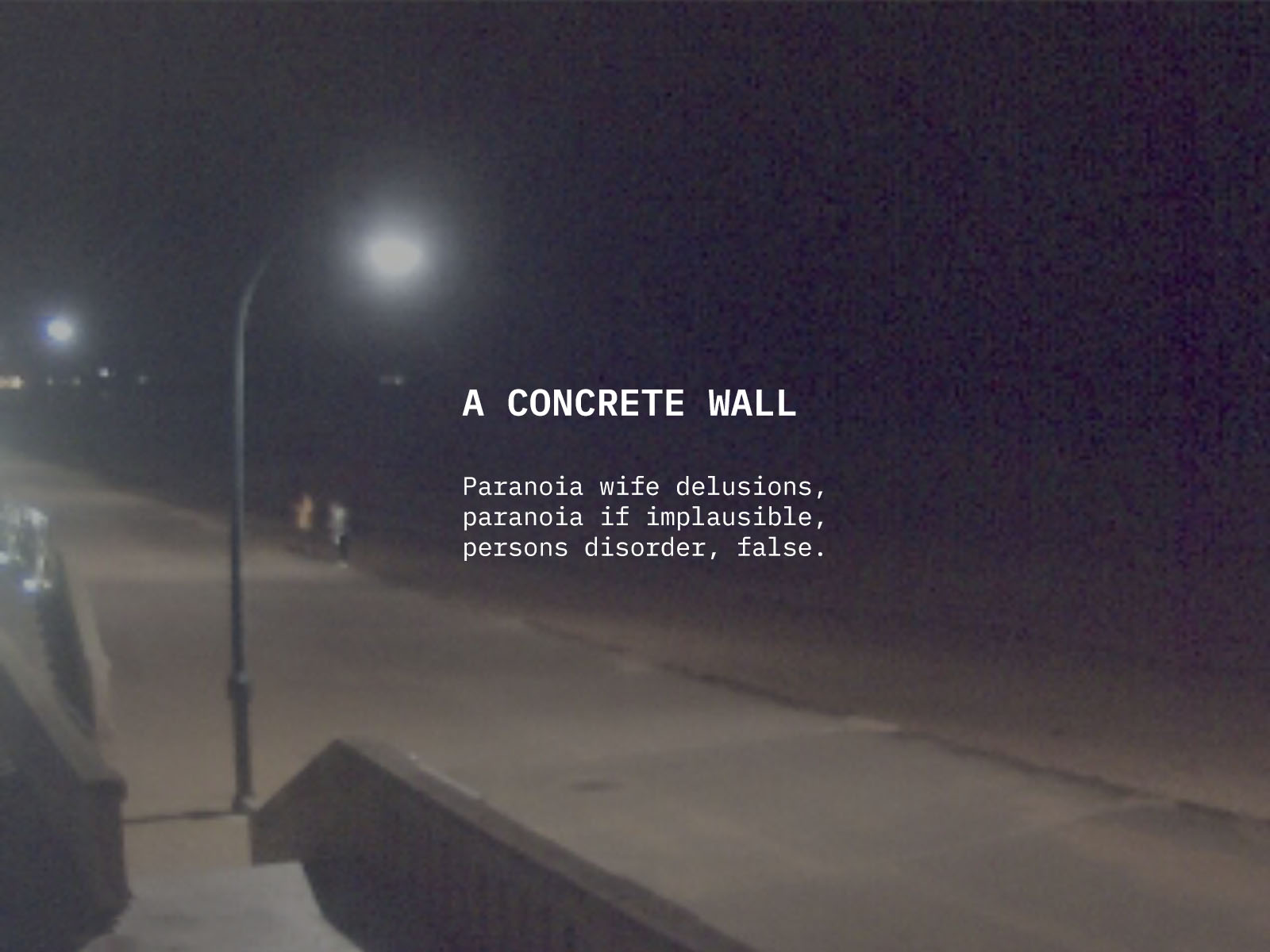Joe Mcalister (2018)
Joe McAlister’s Webcam Poetry is a collection of poems combined with live images from webcam footage. It enables the machine to analyse human behaviour and present its findings through three-line poems. The ability for webcams to create poetry, an artform considered to be highly complex and requiring a high level of cognitive function, obscures the lines between human and machine. This causes the audience to question who is responsible for the camera’s actions and brings surveillance to life, giving technology human qualities. McAlister explains that he uses CCTV feeds to create poetry that can ‘encapsulate that moment in time’ (2018), but this poses the question of the privacy rights of the individuals in the videos he uses. In his website, he recognises that ‘blue-coloured corporations misusing customer data has rightly led to public scrutiny in who collects and has access to our information’ (2018). By not asking the subjects of CCTV feed for consent, however, McAlister arguably behaves like the entities he denounces.
‘A Street Light’ sets the scene for this collection, where the audience finds a deserted pavement with the only source of light is a dim streetlight. The brevity of the poem and the lack of grammatical order in the language mirror the uncertainty of the deserted and badly lit street. We see compounds such as ‘sodium’ mixed with ‘people’, reflecting the complex relationship between science and humanity, associated with technology. This juxtaposition highlights that while the camera has a degree of automatism it may never be able to grasp the nuances in human analysis. The camera, that is enforcing the Panopticon, cannot ensure accurate surveillance, which can have grave consequences.
Themes of paranoia prevail in Webcam Poetry, particularly in ‘A Concrete Wall’. Following the image of ‘A Street Light’, in ‘A Concrete Wall’ we find outlines of what seems to be two humans on the edge of the pavement leaning into the street. The webcam seems to analyse this as a take on the paranoia that may be experienced by both individuals. The layout of this poem almost seems like a discussion the webcam is having with itself in order to identify what is happening in the image, and in this light the camera becomes anthropomorphised. The ‘p’ alliteration in this poem creates a fast-paced read, which appears to reflect the machine’s analysis of the behaviour of the subjects. Like the Panopticon, where the presence of the observer remains ambiguous, the webcam finds that the paranoia springing from the ‘wife’ is a ‘delusion’ and describes the figures as having ‘persons disorder’. This piece of technology has now allowed itself to analyse human emotions and decide for themselves based on the actions they see. The Panopticon becomes more visible in its idea of the power dynamic and control the observer has over the observed, to the extent where the subject is diagnosed based on their behaviour.
When interviewing McAlister, we enquired about the humanisation of webcams and CCTV within his work. He argued that ‘CCTV has always been about surveillance and protecting assets, or “people”, usually under the guise of safety’. He believes that webcams enable us to communicate, while CCTV observes our interactions. This observation is similar to the concept of the Panopticon, in which the constant observation has the possibility to change the way we interact with the world around us. CCTV observation is a physical act, leaving no element of questions, reflecting how the Panopticon structure consists of always watching and being watched.
Webcam Poetry elaborates on this in ‘This Is a City’, where the image captures a group of people sitting on the steps of a cathedral at nighttime. This poses the idea of the lack of privacy people have even on religious ground, with no freedom to act without being recorded. The idea of surveillance has invaded every part of the psychological and material world. With the new deployment of facial recognition systems around London, the motives of CCTV surveillance come under further scrutiny, questioning whether we are now facing the personification of the technology and attaching a human face towards something that was intended to aid humans not become human. It starts measuring against our current concepts of ‘humanity’ and what it truly is to become human.
McAlister never explains how he is able to access the footage, highlighting issues of accessibility of data and information, available to individuals and corporations alike. This poses a problem in the whole idea around surveillance and what the information that comes from it is actually being used for.



Comments are closed.